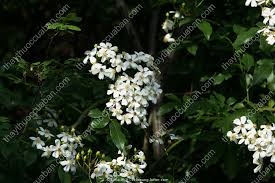
Rosa cymosa, commonly known as the Cymosa rose or the Seven Sisters rose, is a versatile plant species that not only contributes to aesthetic beauty but also plays a crucial role in enhancing soil quality and promoting soil health. In this comprehensive guide, we will explore the various ways in which Rosa cymosa impacts soil quality, its interactions with soil microorganisms, and its potential benefits for sustainable agriculture and ecosystem restoration.
#### Understanding Rosa cymosa
**Botanical Profile**
Rosa cymosa is a species of rose native to regions of Asia, including China and Japan. It is characterized by its clusters of delicate pink flowers and vigorous growth habit, making it a popular choice for ornamental gardens, hedgerows, and landscape plantings. Beyond its ornamental value, Rosa cymosa possesses unique attributes that make it well-suited for soil improvement and ecological restoration initiatives.
**Ecological Functions**
Rosa cymosa exhibits a range of ecological functions that contribute to soil health and ecosystem stability. As a nitrogen-fixing plant, Rosa cymosa has the ability to form symbiotic relationships with nitrogen-fixing bacteria in the soil, such as Rhizobium and Bradyrhizobium species. Through biological nitrogen fixation, Rosa cymosa can convert atmospheric nitrogen into a form that is readily available to plants, thereby enriching soil fertility and supporting plant growth.
#### Impact on Soil Quality
**Soil Fertility**
One of the primary ways in which Rosa cymosa enhances soil quality is by improving soil fertility through nitrogen fixation. By hosting nitrogen-fixing bacteria in its root nodules, Rosa cymosa facilitates the conversion of atmospheric nitrogen into ammonia, which serves as a vital nutrient for plant growth and development. The presence of Rosa cymosa in agroecosystems can increase soil nitrogen levels, leading to enhanced crop yields and improved soil fertility over time.
**Organic Matter Accumulation**
Rosa cymosa also contributes to the accumulation of organic matter in the soil through its leaf litter and root biomass. As the plant grows and sheds leaves, twigs, and other organic residues, these materials decompose and contribute to the formation of humus, a stable organic component of soil that improves soil structure, water retention, and nutrient cycling. The incorporation of Rosa cymosa into agroforestry systems or perennial cropping systems can promote the buildup of soil organic matter, leading to improved soil health and resilience.
#### Soil Microbial Communities
**Rhizosphere Interactions**
The rhizosphere, or the soil environment surrounding plant roots, is a hotspot of microbial activity and interactions. Rosa cymosa influences the composition and activity of soil microbial communities through the release of root exudates, organic residues, and symbiotic associations with nitrogen-fixing bacteria. These interactions play a crucial role in nutrient cycling, soil carbon dynamics, and plant-microbe interactions, ultimately shaping soil fertility and ecosystem functioning.
**Beneficial Microorganisms**
Rosa cymosa fosters the proliferation of beneficial soil microorganisms, including nitrogen-fixing bacteria, mycorrhizal fungi, and plant growth-promoting rhizobacteria (PGPR). These microorganisms form symbiotic relationships with Rosa cymosa and other plant species, providing essential services such as nutrient acquisition, disease suppression, and stress tolerance. By supporting the growth and activity of beneficial soil microbes, Rosa cymosa contributes to soil health and resilience in diverse agroecosystems.
#### Sustainable Agriculture Applications
**Agroforestry Systems**
Integrating Rosa cymosa into agroforestry systems offers multiple benefits for sustainable agriculture and soil management. Agroforestry systems that incorporate nitrogen-fixing woody species like Rosa cymosa can enhance soil fertility, reduce the need for synthetic fertilizers, and promote biodiversity in agricultural landscapes. By diversifying crop rotations and incorporating perennial species, farmers can improve soil structure, water infiltration, and nutrient cycling while reducing erosion and soil degradation.
**Cover Cropping**
Rosa cymosa can also be used as a cover crop in agricultural rotations to improve soil quality during fallow periods or between cash crops. As a cover crop, Rosa cymosa provides living roots, organic residues, and nitrogen-fixing capabilities that contribute to soil health and fertility. By planting Rosa cymosa in rotation with cash crops, farmers can enhance soil structure, suppress weeds, and reduce nutrient leaching, ultimately improving the sustainability and resilience of cropping systems.
#### Conclusion
Rosa cymosa serves as a valuable ally in efforts to enhance soil quality, promote sustainable agriculture, and restore degraded ecosystems. Through its ability to fix nitrogen, accumulate organic matter, and foster beneficial soil microbial communities, Rosa cymosa contributes to soil fertility, ecosystem resilience, and agricultural productivity. By incorporating Rosa cymosa into agroforestry systems, cover cropping rotations, and soil restoration initiatives, land managers can harness the ecological benefits of this versatile plant species to build healthy, resilient soils for future generations. Stay tuned for the next part of our guide, where we will explore practical strategies for incorporating Rosa cymosa into soil improvement practices and sustainable land management approaches.
### Enhancing Soil Quality with Rosa cymosa (Part 2)
In the previous section, we delved into the multifaceted ways in which Rosa cymosa positively influences soil quality, from nitrogen fixation to the promotion of beneficial soil microbial communities. Now, let’s explore practical strategies for leveraging the soil-improving properties of Rosa cymosa and its applications in sustainable land management practices.
#### Practical Applications
**Soil Amendment**
Incorporating Rosa cymosa biomass into soil as an organic amendment can enhance soil fertility and structure. Mulching with Rosa cymosa leaves, twigs, or prunings adds organic matter to the soil, which improves soil structure, water retention, and nutrient availability. As these organic materials decompose, they release nutrients, humic substances, and microbial metabolites that enrich the soil and support plant growth. Incorporating Rosa cymosa biomass into composting systems can also accelerate the decomposition process and produce nutrient-rich compost for soil enrichment.
**Green Manure**
Rosa cymosa can be used as a green manure crop to improve soil fertility and provide nitrogen for subsequent crops. Planting Rosa cymosa as a cover crop or intercrop in agricultural fields allows it to capture atmospheric nitrogen, which is then released into the soil upon decomposition of the plant biomass. Incorporating green manure crops like Rosa cymosa into crop rotations can reduce the need for synthetic fertilizers, improve soil structure, and enhance crop productivity while minimizing environmental impacts.
**Soil Stabilization**
The extensive root system of Rosa cymosa helps stabilize soil and prevent erosion in vulnerable landscapes. Planting Rosa cymosa on slopes, riverbanks, or degraded areas helps anchor the soil, reduce runoff, and mitigate soil erosion. The dense network of roots creates soil-binding structures that hold soil particles together, preventing erosion caused by wind, water, or human activities. By stabilizing soil and protecting against erosion, Rosa cymosa contributes to the conservation of soil resources and the preservation of ecosystem integrity.
#### Ecosystem Restoration
**Land Reclamation**
Rosa cymosa plays a valuable role in land reclamation efforts, particularly in areas affected by mining, deforestation, or other forms of land degradation. Planting Rosa cymosa on degraded or disturbed sites helps restore soil fertility, revegetate barren landscapes, and promote ecosystem recovery. As a pioneer species with rapid growth and establishment capabilities, Rosa cymosa can colonize degraded areas and create favorable conditions for the establishment of other plant species, facilitating the natural regeneration of ecosystems over time.
**Soil Remediation**
Rosa cymosa has been investigated for its potential to remediate contaminated soils and restore soil health in polluted environments. The deep root system of Rosa cymosa allows it to access nutrients and moisture from deeper soil layers and uptake trace elements and pollutants from the soil. Through a process known as phytoextraction, Rosa cymosa can accumulate heavy metals and toxins in its tissues, reducing soil contamination levels over time. By planting Rosa cymosa on contaminated sites and properly managing plant biomass, land managers can mitigate soil pollution and promote soil recovery through phytoremediation.
#### Integrated Landscape Management
**Agroecological Approaches**
Integrating Rosa cymosa into agroecological systems enhances the resilience and sustainability of agricultural landscapes. Agroforestry systems that combine trees, crops, and livestock with nitrogen-fixing species like Rosa cymosa improve soil fertility, biodiversity, and ecosystem services. By diversifying farm landscapes and adopting agroecological principles, farmers can enhance soil health, conserve natural resources, and promote food security in a changing climate. Agroecological approaches that incorporate Rosa cymosa offer viable alternatives to conventional agriculture and contribute to the transition toward more regenerative and sustainable farming practices.
**Urban Greening**
In urban areas, Rosa cymosa can be used in green infrastructure projects to improve soil quality, mitigate urban heat islands, and enhance urban biodiversity. Planting Rosa cymosa in parks, gardens, and green spaces helps sequester carbon, reduce air pollution, and create habitat for wildlife. By greening urban environments with vegetation such as Rosa cymosa, cities can enhance residents’ quality of life, promote environmental sustainability, and build resilient urban ecosystems that benefit present and future generations.
#### Conclusion
Rosa cymosa emerges as a powerful ally in efforts to enhance soil quality, restore degraded landscapes, and promote sustainable land management practices. Through its diverse ecological functions, from nitrogen fixation to soil stabilization, Rosa cymosa offers practical solutions for addressing soil degradation, conserving natural resources, and building resilient ecosystems. By integrating Rosa cymosa into soil improvement strategies, ecosystem restoration projects, and agroecological systems, land managers, farmers, and policymakers can harness the transformative potential of this versatile plant species to create healthier, more productive landscapes for generations to come.










